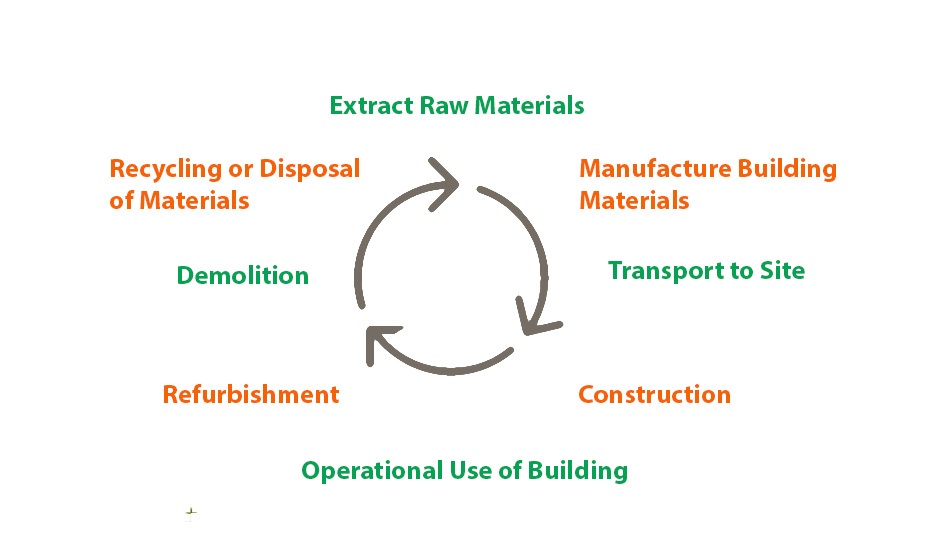Embodied Carbon
By Marie Meenan, Mechanical Engineer
Embodied Carbon is defined as the equivalent carbon of greenhouse gas emissions that are associated with the making, installation, maintenance, repair, replacement, and end of life of a product or building throughout its total lifecycle.

It is thought that buildings account for around 30% of total greenhouse emissions globally and approximately one third of this is from embodied carbon. It is suggested that MEP services could account for up to 27% of the embodied carbon within new build schemes. With the release of CIBSE’s TM65, Embodied Carbon in building services: a calculation methodology this year there is an opportunity for us to contribute to targets set out by the government to reduce carbon emissions in the built environment by 50% by 2025.
Although Embodied Carbon is prevalent in construction, as buildings become more energy efficient the proportion of embodied carbon within a building is becoming more relevant. Building services falls short compared to that of the other elements of construction, however, the design stage of a building has the greatest opportunity to reduce the impact of a building’s embodied carbon.
Environmental Product Declarations (EPDs) are a standard way of declaring the embodied carbon of building services equipment. These are sometimes directly available from manufacturers, but currently there remains a gap. OR Consulting is dedicated to using TM65 to estimate CO2e for building services equipment where EPDs are not available, helping to reduce the impact of MEP emissions. Sharing this information with CIBSE will help the MEP community to build knowledge in the area as a whole.
As the demand for reducing CO2 emissions increases, it is becoming increasingly important for Building Services Engineers to play their part in the movement towards a greener future. OR Consulting are excited to contribute to this movement.
Visit www.cibse.org to access TM65: Embodied carbon in building services: A calculation methodology
